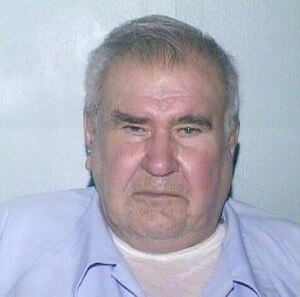Longest Serving Prisoner Dies

April 11, 2012
kosmo - See all 763 of my articles
On June 26, 1946, Ted Williams went 4 for 7 with 2 home runs in a double header against the Detroit Tigers. He’d win his first American League MVP that year and would finish his Hall of Fame career lauded by many as The Greatest Hitter Who Ever Lived.
This day, so many decades ago, was also the last day that William Heirens took a breath as a free man. On March 5, 2012, Heirens died in prison. He had been in prison for 65 years and was thought to be the world’s longest serving prisoner.
Early life
Heirens got off a a bad start in life. By the age of thirteen, he was already an accomplished burglar. After being arrested on a weapons charge, a search of his parents’ property yielded a significant cache of stolen property. Heirens was eventually sentenced to spend time at a school run by monks. He excelled as a student, and was accepted to college at age 16.
The Killing
Heirens was eventually arrested for three killings.
The first killing was Josephine Ross on June 5, 1945. Her killing was not a particularly unusual one, as far as murders go. The thought was that she had interrupted a burglar, who had then killed her.
On December 20, 1945, Frances Brown was killed – and the killer left behind a message for the police. This message was written on the wall in lipstick:
For heavens
sake catch me
before I kill more
I cannot control myself.
Clearly, this was a very disturbing message. Police now knew they were dealing with a serial killer – and very likely a mentally disturbed and unpredictable one.
On January 6, 1946, a six year old girl, Suzanne Degnan was kidnapped. Her body was eventually found in several pieces, strewn over a large area. The murderer had left behind a ransom note
On the front:
GeI $20,000 Reddy & wAITe foR WoRd. do NoT NoTify FBI oR Police. Bills IN 5’s & 10’s
on the back:
BuRN This FoR heR SAfTY
Heirens arrested
On June 26, 1946, Heirens was arrested after committing a burglary. A policeman dropped three flowerpots on his head, which was eventually enough to subdue him.
While in custody, Heirens claims that he was treated very roughly by the police. He was interrogated for six straight days, given sodium pentothal (truth serum), and at one point punched in the testicles. Miranda rights? They didn’t exist – Miranda vs. Arizona was still twenty years away. Heirens was just seventeen at the time.
Authorities alleged that under the influence of sodium pentothal, Heiren admitted that an alternate personality of his admitted to the murders.
Confession
Heirens’s lawyers felt that it was likely he would be convicted, and worked out a plea bargain with the prosecution. Heirens claimed that a Chicago Tribune article about the killings was used as a guide. When he would give information that conflicted from the story in the Tribune, his lawyers would nudge him back to the Tribune’s story line.
At the last moment, the state’s attorney yanked an agreement for one life term and changed it to three life terms … or he’d go to trail and seek the death penalty.
The prison years
During his sixty five years in prison, William Heirens earned 250 college credits, paying the tuition with his own money. He became the first prisoner in Illinois to earn a four year degree. He set up the education system at one prison, helped inmates earn GEDs, and served as a jailhouse lawyer.
According to the regulations of 1946, Heirens should have been set free in 1983. However, these regulations changed in 1973. Although a 1983 appeals court rule that Heirens should be released immediately. This ruling was later reversed, and Heirens remained behind bars.
Questions about his guilt
We never got a chance to see how the evidence would play to a jury, since Heirens agreed to a plea deal instead. There’s certainly much to ponder.
Had the confession gained under the admission of sodium pentothal been used in court, Heirens would have likely been given a new trial, as evidence gained by using “truth serums” was deemed inadmissible by the 1950s.
Handwriting samples from Heirens matched nine points of comparison with the lipstick writing. But that’s hardly a surprised, since 65% of the population would have had handwriting that would have matched these same points of comparison.
Eyewitness testimony – which is notoriously unreliable in the best of situations – shifted over time. Witnesses who weren’t sure that Heirens was the man they saw eventually became completely convinced that he was.
Perhaps the most damning evidence was a bloody fingerprint at the home of Frances Brown. However, this evidence has been called into question. Among other concerns is that fact that it appears to be a rolled print (the sort you would get when someone has their prints taken be the police) as opposed to a “flat” print that would occur naturally.
The confession Heirens signed? There was dozens of discrepancies between his account of the killings at the actual facts of the murders. However, it’s conceivable that Heirens could have planted false information in his confession so that he could use these discrepancies to later claim that the testimony was coached. Remember, this is a very intelligent person.
Did he do it?
I honestly don’t know. The existence of the death penalty was the game changer. If not for the existence of the electric chair, Heirens may have decided to roll the dice at trial.
Was William Heirens a saint? Certainly not. At the very least, he was a burglar. But was he a murderer? We’ll never known for sure.
The William Heirens case is one of many included in The Casebook of Forensic Detection.
 RSS
RSS
